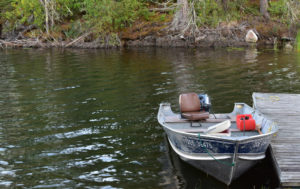 There are many important steps to probating a Will in Minnesota. Minnesota law governing the subject is codified under Minnesota Statute 524, the Minnesota Uniform Probate Code. The probate process is complicated.
There are many important steps to probating a Will in Minnesota. Minnesota law governing the subject is codified under Minnesota Statute 524, the Minnesota Uniform Probate Code. The probate process is complicated.
One of the first things that a new executor or personal representative should do is review and read the Will from beginning to end. Once you have a good understanding of the contents of the Will, the following steps should be taken.
How to Probate a Will in Minnesota
Assuming that the person has died, the power-of-attorney document is no longer legally in effect. This means that the person in charge of the estate, the personal representative, needs to be appointed by a court-of-law to probate a Will.
The personal representative should:
- Read the Will (it is the guide-map of the estate)
- Determine whether there was any other testamentary documents or writings which explain the Will
- Determine who the heirs or distributees are and what their addresses are
- Determine the debts and expenses of the deceased and the addresses of all creditors
- Obtain a death certificate
- Petition the proper court for appointment as personal representative of the estate
The personal representative should also speak with the probate attorney to discuss what options they may have for their particular case. The process is complicated and no one estate is the same as another. Furthermore, failing to properly administer an estate can result in personal liability of the personal representative.
What should be contained in the Petition to probate a Will?
The following information should be contained in a petition to probate a Will in Minnesota:
- Identify the name, address, date-of-birth, and date-of-death of the deceased person
- State who the personal representative is, their address, and their relationship to the deceased
- State why the probate is in that particular court – for example, the deceased lived-in or owned personal property in that county
- Identify the heirs of the estate and their addresses
- Identify the creditors of the estate, or people who the deceased owed money to
- Identify why the petitioner has been nominated or chosen as the personal representative
- Verify that the personal representative will act according to Minnesota law.
- State whether or not a bond is required
- State whether the estate should be supervised or unsupervised by the court
- Identify the estimated assets and debts of the estate.
- State what the personal representative is asking the court to do
The above ten point of information are not all-inclusive. Again, every estate is different and a probate lawyer should be consulted to answer further questions.
Once the personal representative reads the Will,identifies the interested parties, and Petitions the court for appointment, there are several other steps that need to be taken before the personal representative will be appointed by a court to administer the estate. Publishing notice in the newspaper of general circulation in the county of venue is one requirement. If there are no objections to the Petition, an Oath and Acceptance of Appointment document must also be signed by the personal representative and submitted to the court.
Please read prior posts in the blog for further information on the above subjects. This article was only meant to explain how to probate a Will in Minnesota. Further consultation should be sought for determining how to administer a probate estate.
Free Consultation a Minnesota Probate Lawyer
Please contact Joseph M Flanders, a Minnesota probate attorney, for your free initial consultation and to seek help answering your questions at 612-424-0398.




This is the nice article.
I think any business could benefit from the positive image that recycling provides. Even if your workplace doesn’t have a lot to recycle, it still looks good that you’re doing your part. There are many different ways to recycle easily, even commercial companies that will do all of the heavy lifting for you.